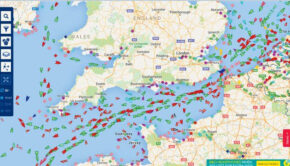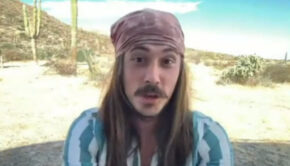Let’s be careful out there
Published on February 3rd, 2024
As a past military and commercial airline pilot, Craig Warner knows a thing or two about safety. In the February 2024 newsletter for the Lake Michigan Sail Racing Federation, he shares an observation on the topic:
Last year, I met a fellow racer on the Chicago to St. Joseph Race who left a positive impression on me. I was walking along the river where a number of boats that raced across the lake the night before were tied up. A gathering of crew members was laughing and recounting the stories of the previous night’s voyage and the exciting finish line, which was set up nowhere near where it was supposed to be. The misplaced finished line led to an exciting finish.
A young man in his early teens was in the middle of this cheerful crowd. He had an infectious smile that went from ear to ear. It turned out that he was a student at a Chicago Youth Sailing group and loved the sport of sailboat racing, and his demeanor, conversation, and body language let you know just how happy he was to be there.
I started asking him some questions about what he enjoyed about the race. Of course, the big smile returned as he talked about sailing across the lake at night. I then asked him if he wore his PFD.
At that, the smile ended. A young teen’s face went from jubilant to about as serious as could be. He looked me straight in the eye and said, “Of course, I wear a PFD; it is required.” Good answer says I, and he immediately passed the Major Warner boating safety quiz, and so did his skipper and crew. Any other answer would have resulted in a failed check-ride.
I started thinking about how important it is to set good examples. Who do we look to set a good example, and what impact does that have on people looking to learn about our sport? This lad looked to his skipper, fellow crew, and his instructors at sailing school, and their examples paid off.
I look around the race course to see who sets a good example when racing. It is a mixed bag. New people to the sport may instantly think that sailors with multiple decades of experience are the ones to look to. In reality, quite the opposite may be true.
I have flown with pilots who have flown for 40 years and never progressed in their safety thinking throughout their careers. On the other hand, I have flown with brand-new pilots who continuously seek knowledge and safety advice. The same applies to sailing.
Where do you fit into the equation?
If you are the person in charge and you set a good example, you just might get successfully rescued, or better yet, the accident may never happen. If you see a fellow crewmember letting their guard down, tell them to correct the situation, and you might have just saved a life.
I keep trying to determine how to win this war to convert everyone to best safety practices? Thinking back to the young man I met at St. Joe, I may stop looking at the adults who, at times, take steps backward and look to the kids coming up the pipeline and hope they will change the safety attitudes of other sailors.
After the race, I hope to see many infectious smiles on people who had a great time. Just remember, a lapse in setting good safety examples can put a quick end to the fun. Keep safety number one in your actions and be a good ambassador for safety.
Let’s be careful out there.









 We’ll keep your information safe.
We’ll keep your information safe.